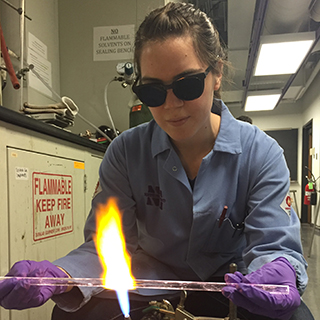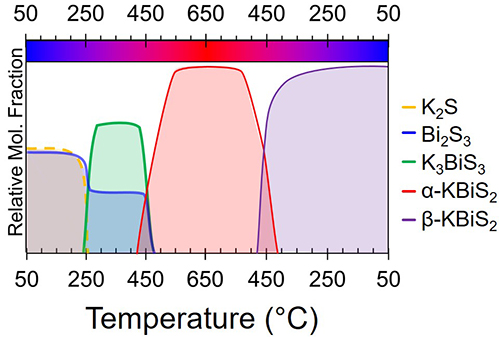Panoramic Solid-state Synthesis Using In-situ Powder X-ray Diffraction Techniques

The in-situ PXRD capabilities at IMSERC have provided essential data for my doctoral work
Becca McClain,
PhD
Chemistry Department
Solid-state synthesis has historically focused on reactants and end products; however, knowledge of reaction pathways, intermediate phases and their formation may provide mechanistic insight of solid-state reactions. With an increased understanding of reaction progressions, design principles can be deduced, affording more predictive power in materials synthesis. In pursuit of this goal, in-situ powder X-ray diffraction (PXRD) is employed to observe crystalline phase evolution over the course of the reaction, thereby constructing a “panoramic” view of the reaction. In-situ diffraction studies were conducted in the K-Bi-Q (Q = S, Se) system to understand the formation of known phases in this system as well as to correlate future observations of analogues.

Three new phases, K3BiS3, β-KBiS2, and β-KBiSe2, were discovered using in-situ X-ray diffraction up to 800°C. Panoramic synthesis showed that K3BiQ3 serves an important mechanistic role as a structural intermediate in both systems in the reaction to form the KBiQ2 structure. The formation of the β-KBiQ2 structures, both of which crystallize in the NaCrS2 structure type, show a boundary where the structure can be disordered or ordered with regards to the alkali metal and pnictogen. A cation radius tolerance for six-coordinate cation site sharing of ∽1.3 is proposed. The mechanistic insight this technique provides in the K-Bi-Q system is progress towards the overarching goal of synthesis-by-design.
